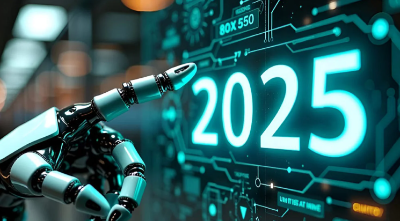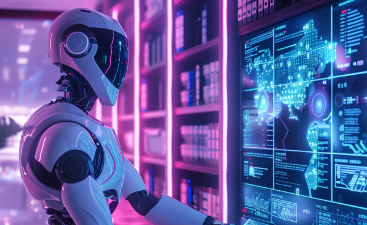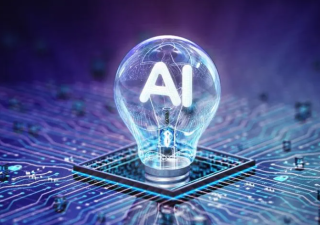The development of AI did not occur overnight, but rather has progressed through several key stages: from its earliest embryonic stages, which relied on symbolic logic and rule-based systems, to the knowledge engineering era, which emphasized the encoding of expert knowledge; from the machine learning stage, which primarily relied on data-driven statistical learning methods, to the era of deep learning and large models, led by deep neural networks, and finally to the current, highly anticipated quest for artificial general intelligence (AGI). These stages represent both the evolution of technological paths and the deepening of humanity's understanding of the nature of "intelligence." This article will systematically review each stage of AI's development, exploring its core concepts, technological evolution, key milestones, strengths and weaknesses, and profound impact on society, aiming to provide a clear and comprehensive perspective on the historical context and future trends of AI.
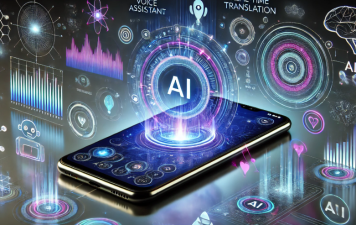
Definition of Artificial Intelligence
Artificial intelligence (AI) refers to the ability of computer systems to mimic human cognitive abilities, such as learning, reasoning, decision-making, and understanding language and vision. The core goal of AI is to enable machines to simulate, extend, and even surpass human intelligence. Specifically, artificial intelligence goes beyond enabling machines to perform tasks; it also includes giving them the ability to self-learn, self-adapt, and even think independently.
The application of artificial intelligence covers numerous fields, such as natural language processing (NLP), computer vision, autonomous driving, and robotics. With technological advancements, AI has become more than just a simple tool; it has become a key technology for driving industry innovation, improving work efficiency, and solving complex problems.
What is Deep Learning?
- Definition of Deep Learning
Deep learning is a branch of machine learning that uses a multi-layered neural network architecture to mimic the neuronal connections and learning methods of the human brain, automatically learning and extracting complex features from massive amounts of data. Unlike traditional machine learning methods, deep learning uses a hierarchical structure for end-to-end learning, automatically discovering patterns in data without the need for human intervention or manual feature design.
The core of deep learning lies in "depth"—by increasing the number of neural network layers (i.e., increasing the network's depth), the model is capable of more complex abstractions and learning, enabling it to handle more complex tasks such as image recognition, natural language processing, and speech recognition.
- The Foundation of Neural Networks
The foundation of deep learning is neural networks, which are inspired by biological neural systems. A neural network consists of a large number of "neurons" that interact with each other through "connections." Each neuron receives input signals, processes them, and then outputs them to the next layer of neurons. A neural network typically consists of multiple layers, including input, hidden, and output layers.
- Input layer: Receives external data (such as images or text).
- Hidden layer: Gradually extracts features from the input data through weighting and nonlinear transformations. The "depth" of deep learning is precisely due to the layer-by-layer abstraction and complex learning achieved through multiple hidden layers.
- Output layer: Makes a final decision or prediction (such as a classification result or regression value) based on the features learned by the network.
- Differences between Deep Learning and Traditional Machine Learning
Unlike traditional machine learning methods (such as support vector machines, decision trees, and KNN), deep learning has the following significant characteristics:
- Automatic feature extraction: Traditional machine learning relies on manual feature design and extraction, while deep learning can automatically extract high-level features from data, eliminating manual intervention. For example, in image recognition, traditional methods require manual design of features such as edges and textures, while deep learning can automatically discover different features in images (such as edges, shapes, and objects) through a multi-layered network structure.
- Multi-layer abstraction: Deep learning uses an increasing number of neural network layers to abstract and represent data at multiple levels. Each layer extracts more complex, higher-level features from the previous layer, enabling the model to handle increasingly complex problems. For example, in speech recognition, lower-level networks may extract frequency features of an audio signal, while higher-level networks can recognize specific words or sentences.
- End-to-end learning: Deep learning models are typically end-to-end, meaning the process from raw data input to final output is continuous, without requiring manual intermediate steps. Traditional machine learning often requires multiple stages of processing (such as feature extraction, model training, and prediction).
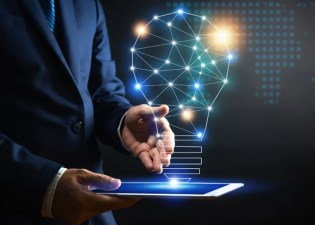
- Core Technologies of Deep Learning
- Convolutional Neural Networks (CNN): Convolutional neural networks are the mainstream method for processing images and videos. CNNs can effectively extract spatial features from images and perform automated image recognition. It builds multi-layered feature extraction capabilities through convolutional and pooling layers and is commonly used in fields such as object recognition and face recognition.
- Recurrent Neural Networks (RNNs): RNNs excel at processing sequential data, such as text, speech, and time series. RNNs can capture the temporal information of data and, through recurrent connections, transfer information from previous moments to subsequent moments, enabling them to better handle sequential problems. Long Short-Term Memory (LSTM) and Gated Recurrent Units (GRU) are improved versions of RNNs that address the vanishing gradient problem of traditional RNNs in processing long sequences of data.
- Generative Adversarial Networks (GANs): GANs consist of two neural networks (a generator and a discriminator). The generator attempts to generate realistic data, while the discriminator determines whether the data is realistic. GANs have demonstrated outstanding performance in image generation, style transfer, and data augmentation.
- Autoencoders: Autoencoders learn low-dimensional representations of data by compressing input data and reconstructing its original form. Autoencoders are widely used in tasks such as noise reduction, anomaly detection, and data compression.
- Reinforcement Learning: Reinforcement learning is a learning method that uses interactions with the environment. AI adjusts its behavior based on rewards or penalties. Deep reinforcement learning combines deep learning and reinforcement learning, enabling AI to make decisions and optimize in complex environments.
- Advantages and Challenges of Deep Learning
Advantages:
Efficient processing of large amounts of data: Deep learning performs exceptionally well in large data environments. Compared to traditional methods, deep learning can process more data samples and achieve more accurate results.
Excellent generalization: Through multiple layers of abstraction and feature extraction, deep learning demonstrates strong adaptability and generalization capabilities in diverse scenarios.
Wide Application Areas: Deep learning has achieved breakthroughs in fields such as computer vision, speech recognition, natural language processing, and recommender systems, becoming a core technology in today's AI field.
Challenges:
High Computing Resource Requirements: Deep learning requires a large amount of computing power and data support, especially when training large models, which requires powerful hardware support (such as GPUs).
High Data Dependency: Deep learning requires a large amount of labeled data for training, especially supervised learning, which requires massive datasets to ensure model accuracy. Poor model interpretability: The complexity of deep learning models leads to their "black box" nature, making it difficult to easily explain the model's decision-making process. This may cause certain problems in some high-risk fields (such as healthcare and finance).




